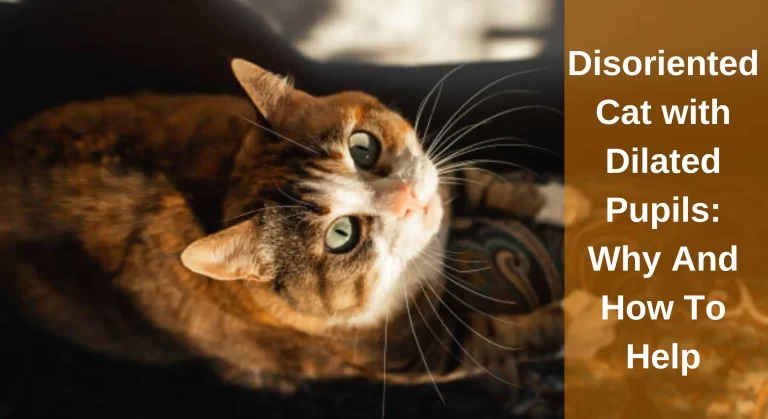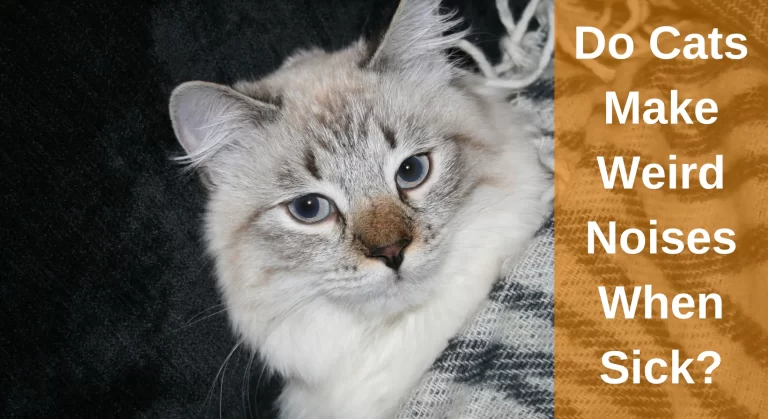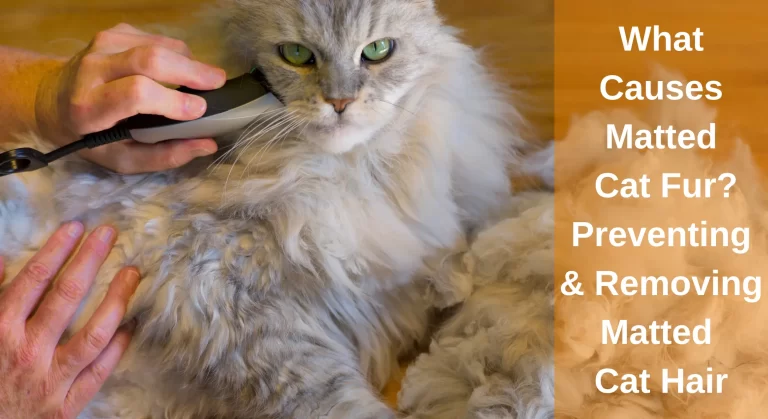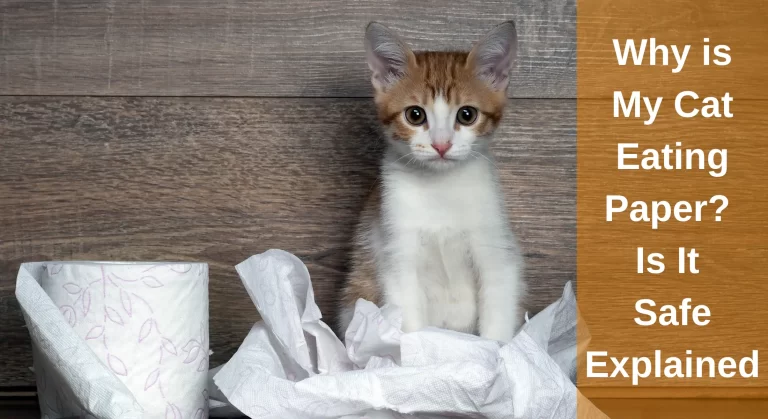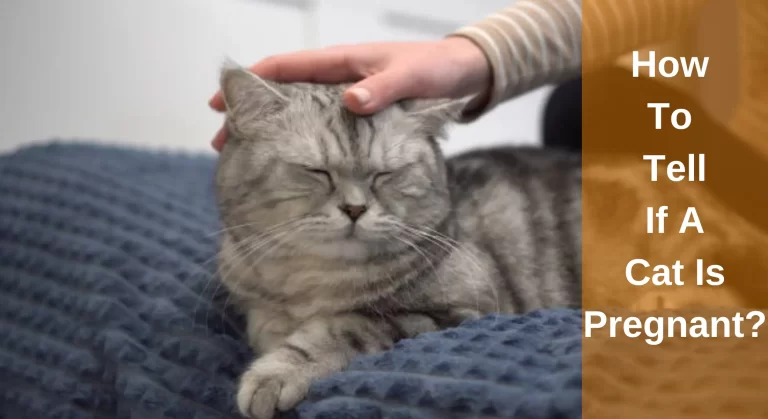Why Are My Cat’s Nails Splitting? How To Help
You may have found small cat nails sticking to your cat’s scratching surfaces, couch, and throughout the house; they need to be cut when they get big enough to attack others. Most loving cat owners get worried and question why are my cat’s nails splitting.
However, cats regularly shed the upper skin of their nails, brittle-appearing claws, and frequent nail breaking might indicate ageing or bad health. Your feline’s nails may crack if the clippers you use to trim their nails are worn out.
Finding your cat’s nails appearing to be about to come out can be alarming, especially for new cat owners. While the cause of this may seem harmless enough, other potential causes are worthwhile knowing about, and that may demand our attention.
Continue reading to learn more about the causes of your cat’s nail splitting and what you can do to enhance their nail health.
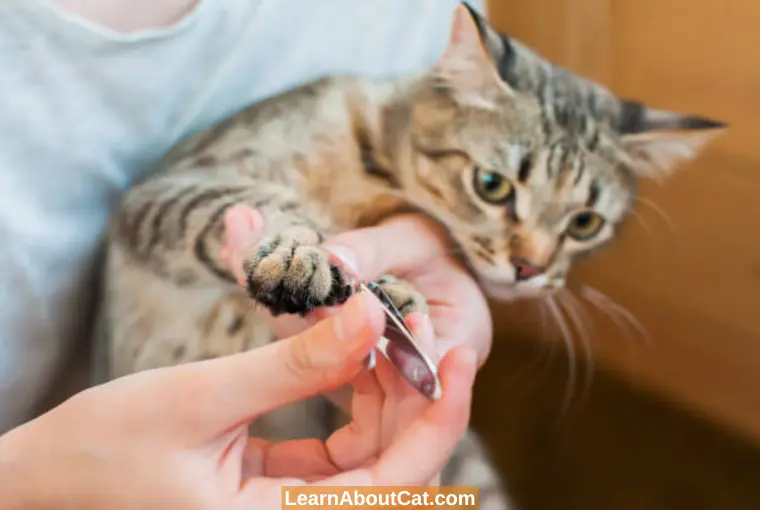
Reasons Why Cats Nails Splitting
Seeing your cat’s nails crack or even have pieces come off might be terrifying. Don’t worry though; it’s typically a normal occurrence, similar to how our nails may break. Cat’s Nail splitting occurs due to the following reasons.
1. The Nail on Your cat is Broken
Similar to how people might break their fingernails when they catch them on something, cats can experience nail issues. Your carpet, their favourite toy, or a scratching post might all be at blame.
Whatever the object, your cat will tug their paw forcefully to release itself when its claws become trapped on it. For this reason, it’s essential to trim your cat’s nails to keep them short periodically. Your cat’s nails may also start to split more regularly as they get older because they are becoming more brittle.
2. Old Age
If your feline becomes older, you will find that they are having trouble using the cat litter, neglects cleaning themselves, and don’t care as much about scratching posters. This lack of concern for the toenails can lead to broken ends, growing nails, irritation, and a greater tendency to refrain from clawing posts.
Osteoarthritis is a progressive joint disease where the healthy collagen that cushions the joints deteriorates. Over time, the joint bones begin to press with one another, which causes restricted joint motion, the development of bone lumps, and other abnormalities in the joint and its surroundings. Cats may find it challenging to cut their toenails due to this irritation.
It’s crucial to begin teaching nail files to your feline as quickly as possible. Once they mature, they don’t have any trouble putting their confidence in you concerning their claws, and if they completely stop clawing their toenails, you won’t be concerned about nail problems!
3. They Have an Underlying Health Issue
It is normal and healthy for a cat’s nail to naturally shed its outer layers. But if your cat’s nails are continuously splitting, it can be an indication of a more serious health problem or that they are in pain.
When they are ill or uncomfortable, most cats cease engaging in familiar and cherished behaviours, including their intrinsic urge to scratch. Cats that don’t scratch as frequently as they once did may have a slower rate of claw shedding since scratching and filing their claws will hasten the process. Consequently, it will seem as though their claws are splitting much more often.
4. Nail and nail bed
It is crucial to inspect every meter of your feline’s nails and the claw if its toenails are breaking or don’t seem to be in good health. Nail illness can result from trauma; for instance, they might have damaged the nail due to being attached to something they were clawing at or from a poor landing. Also, it’s feasible that an antiviral, microbial, or antifungal disease leads to nail breaking.
Moreover, Paronychia, which damages the nailbeds, is a chronic symptom in the cat claw sector. Alternatively, it may result from Pemphigus foliaceus, an autoimmune dermatitis condition that causes flaking skin on nail beds.
Onycholysis leads the nail to split from the nails and is one of many nail illnesses that can result in breaking. Cats seldom develop nail bed tumours, but other cancers may migrate to cause nail bed.
5. Shedding Outer Layer
When the outer layer of nails is shed, the nails are split in half. In this process, claws splitting occurs and layers separate out.
This shedding process normally takes three months, as previously mentioned. Its claw is whole and healthy; the outer sheath is the only part that is split, giving the impression that the claw has been sliced in two.
6. Nail Clippers Are Blunt
As part of general cat care, it’s essential to groom your cat’s nails. As was already said, keeping their nails short and healthy lowers the likelihood that they would catch anything and split one. The following advantages of cat nail trimming:
- Avoid uncomfortable walking due to ingrown claws.
- Home furniture may get less damaged if you clip your cat’s nails.
- Also, owners, as well as other animals less attacked or damaged.
Also, there are many other reasons to keep your cat’s nails healthy.
7. You Need to Modify Your Trimming Techniques
Even after spending money on new nail clippers, you might just need to improve your technique if your cat’s nails still break when you cut them. The accompanying information describes the tried-and-true method I employ with my cats. Why not give it a go alone?
- Before taking your cat into a peaceful area away from distractions like other animals, people, and toys, wait until they are calm.
- Place your cat on your lap or close to you to encourage relaxation and satisfaction and start rubbing them.
- Most cats don’t like having their paws handled, so they could quickly back away from you. Once your cat agrees to let you hold one of them, be persistent and patient. This step might take a few days to complete; you might not succeed on your first attempt.
- Gently press down on the paw pad until you can see your cat’s nails jutting out after its paws are at ease being held and rubbed.
Also Read: Why Do Cats Hate Getting Their Nails Cut?
Should I be Worried if My Cat’s Nails are Split?
Finding old nails is common with cats, especially if you give them plenty of opportunities to scratch to their hearts’ content. However, frequent nail splits might be a sign of a health issue if they go unnoticed.
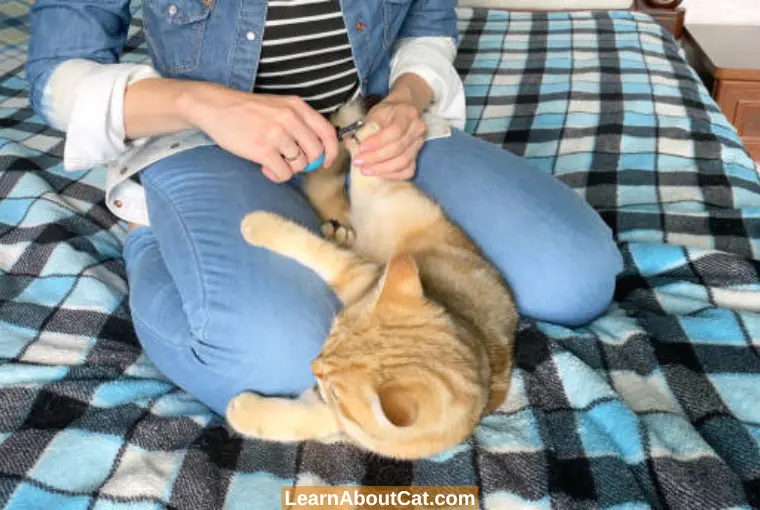
Each cat uniquely reacts to physical pain; some may retreat and avoid contact, while others may start to meow more frequently than usual and become hostile when you approach. You might also hear her purring at moments you wouldn’t typically expect DVM.
You don’t have only to base your decisions on how your cat feels if they have paw injuries or nail and nail bed problems. There are clear symptoms that are simple to spot, such as limping, licking their paws, or even being constantly curled up. In light of this, if you see that your cat’s nails are splitting, carefully check their paws, pay attention to how they act emotionally, and if you’re still worried, take your feline friend to the doctor so they can allay your concerns.
Also Read: Do Overgrow Nails Hurt Cats?
What Can You Do to Minimize Nail Splits?
Even while nail shedding is a common process, it’s a good idea to avoid having any significant nail splits, which can cause pain and bleeding. Here are some tips for preventing the hassle of broken nails.
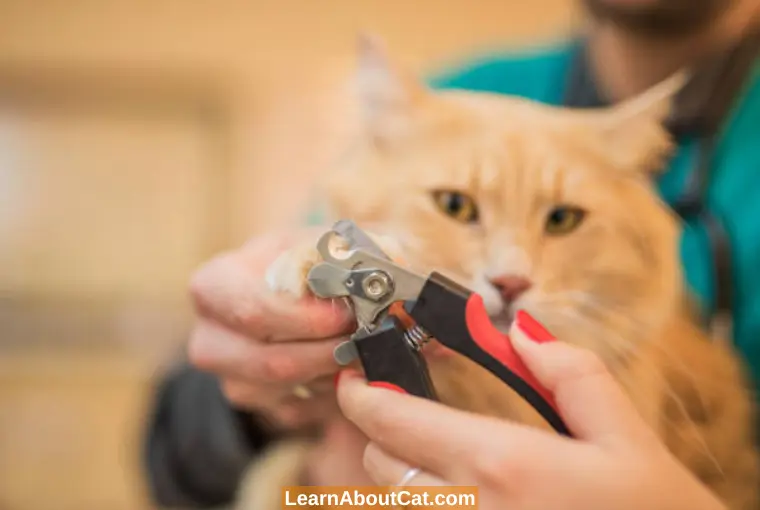
1. Your Cat’s Nails Should be kept Short
Shorter nails will lessen nail splitting since they are less likely to snag. Additionally, having shorter nails reduces the possibility of injury and discomfort brought on by overgrown or ingrown nails.
Regularly cutting your cat’s nails might make a difference. But be sure to use precise nail cutters and adhere to the above-described step-by-step directions. Also, provide them with a scratching surface for their comfort and peace.
2. Providing Scratching Surfaces
One of the best and simplest ways to lessen cat nail splitting is to provide your cat with lots of places to scratch throughout the house. They will be able to sharpen their claws and hasten the natural and healthy process of shedding by doing this.
Furthermore, it will keep them tidy and short, reducing their tendency to break if they become snagged on something. Scratching posts are a good investment for any pet owner. Typically, they are covered with sisal rope or a related alternative that works well to file down cat claws. Most cat trees not only give your cat places to climb, hide, and lounge about, but they also typically include scratching posts built into their designs.
Examine your cat’s scratching habits. Several products with inclined, textured surfaces that fall between horizontal and vertical may be bought, such as scratching mats and long, tall scratching posts.
What Should I Do If My Cat Breaks a Nail?
Even though the aforementioned precautions, broken nails can still cause pain and suffering. Watch your cat if it is limping or if its paw is bleeding. If you see one of them, you should first look for breaks in your cat’s nails to confirm that the problem is a split nail and not another kind of injury. Once this has been determined, adhere to the following guidelines to decrease the suffering:
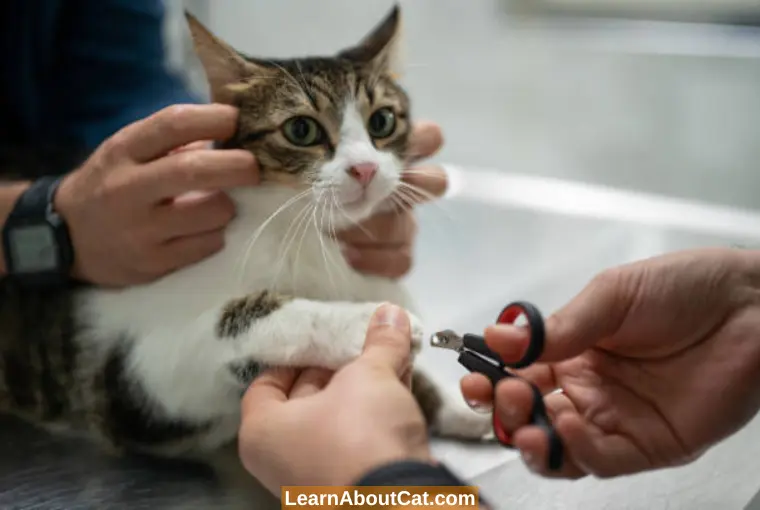
- If your cat is uncomfortable, it could behave more aggressively than usual. So that you may take care of their nails, you’ll need someone to restrain them gently. Try holding your cat close while enclosing them in a towel so they can’t escape but yet feel comfortable.
- The following step is to stop the bleeding by applying a piece of gauze or a towel to the sliced nail; it will be stopped shortly.
- Check the nail more attentively when the bleeding has stopped. Any little nail cracks you observe may be repaired with a set of precise clippers. However, if there is bleeding, the split will usually be deep; thus, a veterinarian should be contacted. Cover the cat’s paws with a towel and get the vet’s help.
- Additional infection control measures will thereafter be necessary for the open wound. The veterinarian could use an antibiotic cream to treat the nail before bandaging it. They could instead treat more severely damaged nails with antibiotics.
- Your cat will certainly require pain medication since walking will be difficult for it. Make certain to offer this. Additionally, keep an eye out for signs of illness and plan a checkup with your veterinarian in a few days. Here, they will check to see how the wound is healing and make sure no bacteria have gotten inside.
How to Trim Cat’s Nails Without Splitting?
While it may be challenging for some people to get their cat to remain still while you trim their nails, with practice, a good technique, and most crucially, the appropriate tools, you can do the task quickly and painlessly for both of you.
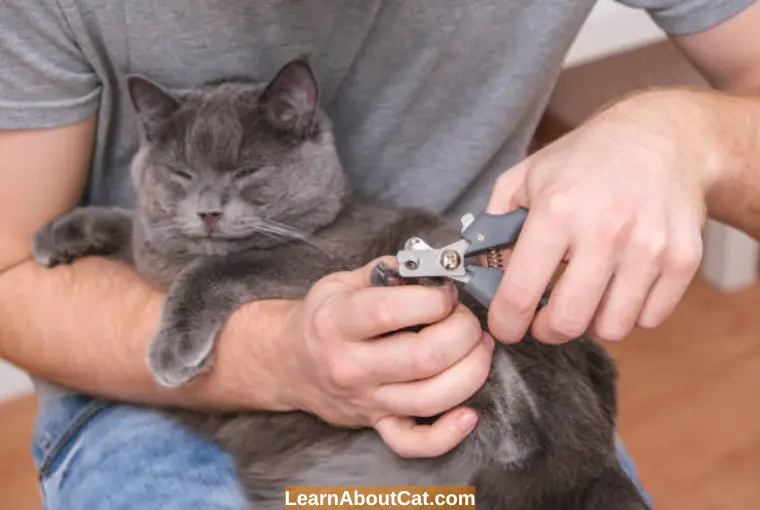
- To prevent your cat’s nails from splitting, you should use good clippers with sharp blades. A dull blade could damage the nail if it smashes it as opposed to performing a precise cut.
- After you’ve completed cutting, you might want to use a nail file to smooth up the nail’s tip to lessen the chance of splitting even further. Because all the blood vessels and nerve endings are located in “the quick,” or the pink area of the nail, it is best to avoid cutting the sharp tip at the very end of the nail.
- Additionally, you don’t have to remove all of your cat’s nails at once. If you are very tense and nervous, and the cat is trying to run from you, your chances of performing a terrible job at nail trimming rise. During this time, you run the risk of accidentally cutting more than the tip, or a faulty cut might cause the nail to break and peel.
- The best method to tackle your cat’s nail trimming is first to see a professional. You might request that your veterinarian walk you through the perfect trimming technique and demonstrate it. There is no shame in leaving the nail-clipping tasks to your cat’s veterinarian.
The Best Way to Prevent Nail Splits
Even while we may not have total control over the future, it is our responsibility as cat parents to ensure that our furry children are healthy and happy. But we can guarantee that children do so in a safe environment. Priority should always be given to providing our cats with the bare requirements, engaging in hunting activities, and, of course, our attention.
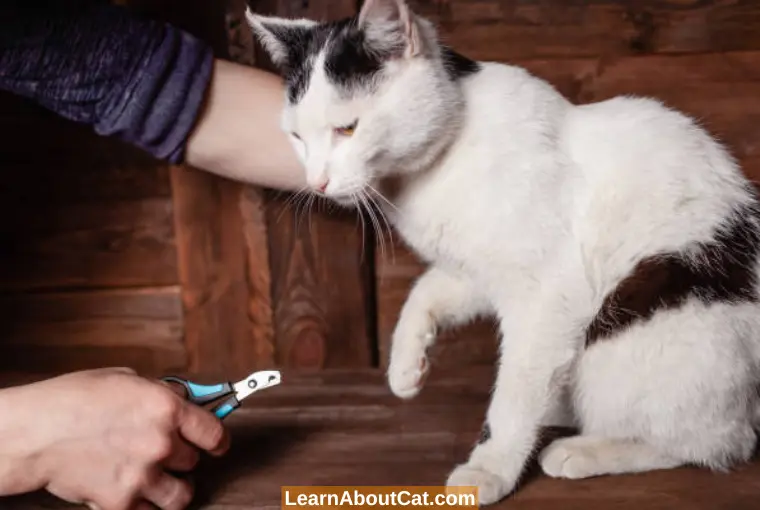
- This essential cat item helps keep your cat’s claws clear of old nail layers and serves as exercise, allowing it to strengthen its legs and shoulders and extend and retract its back muscles and ligaments.
- Even the pickiest cat may be won over by the diversity of cat posts on the market today, made of different textures and materials. Purchasing a tall tree and hanging posts are the best options. It doesn’t matter which post you choose in the end; just be sure to install it as soon as you can. Give him/her a reward and shift the cat’s claws on the cat’s tree.
- While our cats are capable of taking care of their nails, not all cats will find it convenient to use scratching posts, particularly if they are elderly or have mobility issues.
- As a result, clipping your cat’s nails using precise, high-quality clippers must be an essential part of their grooming routine. A professional pet groomer or a veterinarian may be able to take care of it for you if you’re running late and your cat doesn’t appreciate having its nails clipped by you.
Frequently Asked Questions
Why are my cats’ nails so brittle?
Cats’ nails become brittle because of old age, poor diet (lack of iron/calcium), and health problems such as onychorrhexis.
How can I strengthen my cats’ nails?
You can effortlessly strengthen your cat’s nails by:
· Trimming them on time
· Using the right clipper
· Providing them healthy diet
· Doing proper checkups to avoid any health problems or nailbed infections
· Providing proper scratching posters or materials that don’t break their nails off
Why do my cats’ nails split when I cut them?
This is typical, particularly after you have trimmed the claws. The cat’s clawing on a post causes the nail to become broad and longer, sharpening it and causing the thick ends to peel away to reveal a thin, more pointed claw.
Why are my cats’ nails shredded?
Feline’s nails grow and form layers. When they develop, the upper layer crumbles and ends up losing its blood flow, revealing a younger, finer claw beneath. Typically cat nails grow in normally over the course of 2-3 months.
Can a split nail heal on its own?
Whatever the reason, a nail detached from the nail bed won’t grow back. It will have to be replaced by a fresh nail. Slowly regrowing nails.
During the process of growing your cat’s nail, the surrounding layer cracks to make room for the new nail, and once it has been formed, the layer is naturally discarded.
Why is my Cat nail splintering?
Nail splitting and splintering are both different terms. Nails are made of keratin protein, so when the upper dead layer of nails shed off, this is known as splitting. On the other hand, breaking off nails is known as nail splintering, and it is much more painful.
Cats’ nails splinter because they enjoy scratching every stuff, so when they grab carpeting, furniture, or scratch post items, they risk breaking them. Even in some cases, felines jump off a sofa or the countertop and fall on a foot or forefoot, bending the toenail back and breaking it.
The nails of aged felines are dry because of less water consumption, making them brittle and crack suddenly. Moreover, long nails are more likely to “snag” than shorter ones. Whatever the cause, a splintered nail hurts and even bleeds badly.
Wrap Up!
In summary, cat nail splitting is typical and prevalent. Cats’ nails normally split throughout their usual shedding process. Although it could appear a bit alarming, this is a reliable sign. Cat nails can, on occasion, penetrate the nail more deeply, which can cause bleeding, discomfort, and pain.
It is advisable in these circumstances to take your cat to the vet, who will treat the wound and provide a prescription for pain medication.
Who is Isabella?
My name is Isabella, and I am a dedicated and knowledgeable cat enthusiast. With years of experience caring for cats and a deep love for felines, I made a mission to help other cat lovers navigate the challenges of cat ownership.

